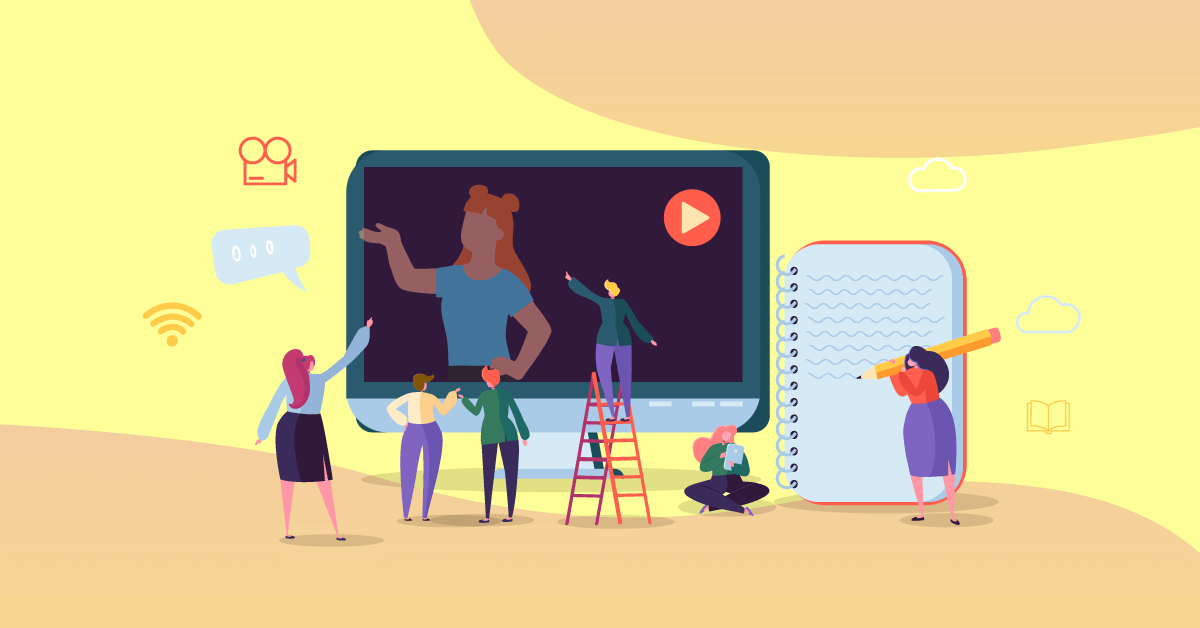While these methods have their merits, they also have their limitations. Isolated sessions often lack follow-up and ongoing support. One-size-fits-all training doesn’t account for the diverse needs and aspirations of individuals. And prioritizing compliance overlooks the broader set of skills required in today’s dynamic workplace. Skills like problem-solving, critical thinking, adaptability, and leadership.
So how do you ensure you provide the necessary support for long-term career development? There are plenty of strategies for promoting healthy and helpful employee growth. But before we get to those, let’s look at why you want to foster employee growth.
Benefits of supporting employee growth
Employee priorities changed in the wake of events like shifting to remote work and The Great Resignation. One of those changes is an increased demand for employee growth opportunities. But the value doesn’t end with employees. Adopting a growth mindset can also be a game-changer for your organization.
Here are a few key benefits of fostering employee career growth within organizations:
- A more dedicated workforce: First, fostering a growth mindset helps keep people engaged. When employees believe dedication and hard work will help them advance, they become more motivated. They embrace challenges. They view setbacks as learning opportunities. And they persevere even when things get tough. This engagement leads to higher levels of productivity as employees seek ways to contribute to the organization.
- A more resilient organization: A growth mindset also helps individuals adjust to constant changes in today’s fast-paced world. We all know that change is the only constant in life, and organizations are no exception.
- By cultivating a learning mindset, employees become more agile and resilient: They are open to new ideas, eager to gain new skills, and readily adapt to evolving technologies and market trends. This flexibility allows your organization to navigate challenges and confidently seize new possibilities.
- Less turnover: Finally, a culture of continuous learning supports people to grow with your organization. Employees who feel supported are more likely to stay committed and loyal. They see a clear path for advancement. And they recognize that their growth aligns with the organization’s success.
As a result, you retain top talent and build a workforce invested in your company’s long-term growth.

6 ways to embrace a growth mindset
Supporting employee career growth and development should be a priority. But how can you put this mindset into action?
Here are six practical ways to foster a growth-oriented culture in your workplace:
1. Build a continuous learning culture
Transform training from a one-off event to a long-term journey. Embed training into daily tasks, allowing employees to apply newly acquired knowledge immediately.
For instance, hold review sessions or run practice scenarios in team meetings. Or ask about how employees and managers see the skills at work during performance reviews.
2. Encourage self-led training
Offer flexible learning that lets employees engage at their own pace. Support career advancement with eLearning options. Use a learning management system (LMS) with a vast library of courses and resources that employees can access anytime, anywhere.
Easy access to quality online courses will support flexibility and autonomy. Employees will be more likely to engage with the training and get more out of it when they’re free to approach it on their own terms.
3. Focus on custom career paths
Personalized training will be increasingly important to the future of learning and development. To support employee growth, you must recognize that each employee has unique talents, aspirations, and development needs. Create personalized career paths that align with their interests and ambitions.
For instance, build training and skill-building into performance reviews. Discuss employees’ career objectives. Coach them on what training programs will help them advance.
4. Provide constructive feedback and recognition
Create a feedback-rich environment where constructive criticism is seen as an opportunity for growth. Celebrate achievements, both big and small, to motivate and inspire employees. And highlight areas for improvement to give them direction.
Offering specific feedback fosters a growth mindset. It inspires employees to embrace challenges and see feedback as a valuable tool for development.
5. Promote cross-functional collaboration
Facilitate knowledge exchange by encouraging employees to work across different teams and departments. This exposes them to different perspectives and fosters collaboration and innovation.
Work to bring together individuals from diverse backgrounds and skill sets. For instance, by providing chances for joint projects, workshops, or brainstorming sessions.
Or create mentorship programs. Pair experienced employees with those seeking guidance and support. This allows for the transfer of skills, insights, and industry knowledge.
6. Support a healthy work-life balance
Recognize that employee growth and development extend beyond the workplace. Encourage a healthy work-life balance by:
- Offering flexible working arrangements
- Promoting wellness initiatives
- Supporting personal development outside of work hours
Greater balance allows employees to pursue hobbies, engage in further education, or take part in community activities. All these tactics contribute to their overall growth and well-being.
Addressing challenges to supporting employee career growth
In theory, supporting employee growth and development is a no-brainer. However, in practice, you may encounter challenges that hinder your efforts. Let’s explore some common obstacles and discuss strategies to overcome them.
Limited time and resources
Full schedules and competing priorities can make finding time and resources for employee development hard.
To tackle the time issue, integrate learning opportunities into existing workflows and processes. For instance, embed training modules or micro-learning activities within relevant projects. Or ask managers to set aside regular time for coaching and mentoring sessions.
- To address the challenge of a tight budget, consider cost-effective alternatives such as:
- Online learning platforms or webinars that offer affordable or even free educational content
- External partnerships or grants that can help fund specific training programs
- Internal talent and expertise: Have employees share their knowledge through peer-to-peer learning sessions or lunch-and-learn events
All these support quality learning while reducing the need for external trainers or consultants.
Resistance from employees
Sometimes, employees may be reluctant to engage in career growth initiatives. They may feel they’re too busy. Or they may need to see the value of the training to them personally. Or they might think it will be boring.
Embed ways to overcome these challenges into your training strategy. For instance, engage in self-paced and online learning options to accommodate busy schedules. Communicate the value and benefits of professional development effectively.
Also, consider engaging employees in the process. Seek their input and involve them in decision-making related to their development.
And finally, consider offering incentives to make growth opportunities more appealing. Give out recognition or rewards to motivate participation.
Getting stakeholders on board
You might face the hurdle of convincing stakeholders. Senior management or department heads may not see the importance of supporting employee career growth.
To convince them, share relevant data and evidence. Show them the positive impact of employee development on organizational performance and success. Present case studies or success stories from other companies so they see the benefits of investing in their workforce.
A growth mindset is an investment in your future
Embracing a growth mindset isn’t just about individual achievement. It’s also about building a thriving and dynamic organization where everyone can reach their full potential.
Supporting employee career growth requires creativity, persistence, and a proactive mindset. But with a little hard work upfront, you can create a culture that embraces continuous learning. And in turn, support a workforce that will help you thrive going forward.



